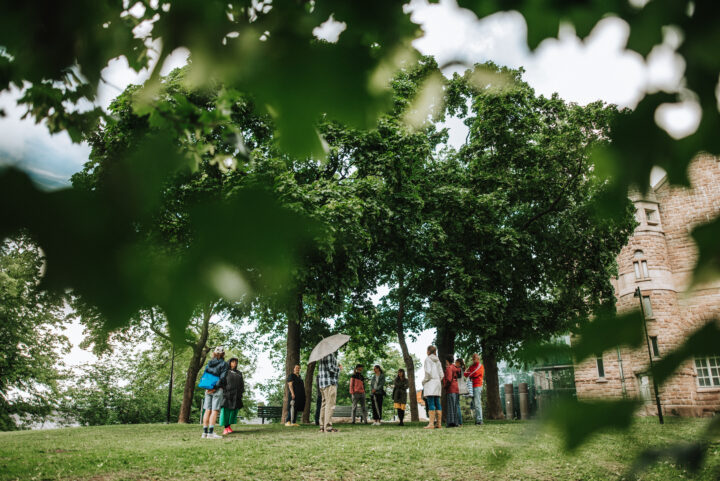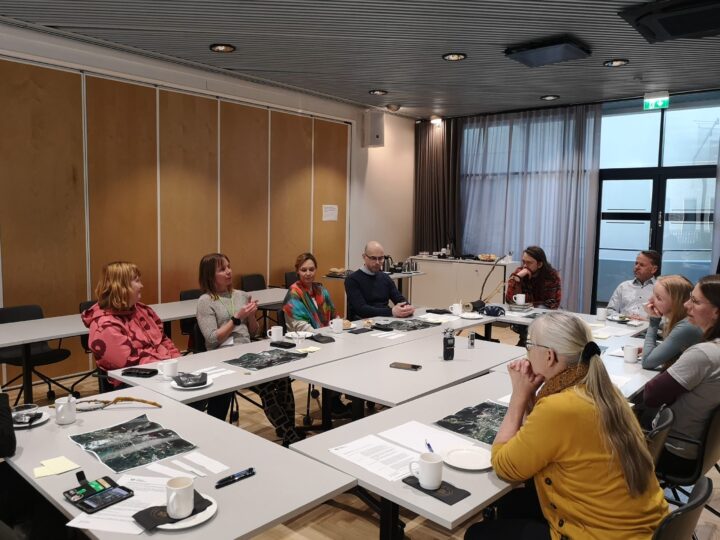Deep down, what do other species and nature mean to us?
Nora Fagerholm and Claudia Krohn, Department of Geography and Geology, University of Turku
In the MUST project, we aim to foster multispecies transitions. Our research delves more deeply than before into the meanings that other species and nature hold for people.
Our work is inspired by a report that is based on an extensive literature review and outlines the multiple values of nature. This report, known as the Values Assessment, was published in 2022 by the Intergovernmental Science-Policy Platform on Biodiversity and Ecosystem Services, IPBES. It presents a detailed classification of the various values of nature and their definitions. The Finnish Nature Panel has translated and adapted the key messages of the report to the Finnish context (see publication).
A core message from the Values Assessment report is that building a sustainable and just future requires a major shift in perspective, where nature is seen beyond its utilitarian role. This includes, for example, recognizing the spiritual and meaningful connections people have with nature.
Based on the report, humans value nature through four “life frames”:
- Living from: Nature as a resource for human use (e.g., food, water, raw materials, economic interests)
- Living in: Nature as a provider of benefits beyond physical resources, enriching human life (e.g., beauty of nature, climate regulation, psychological and cultural benefits)
- Living with: Nature and other species as partners in coexistence (e.g., importance of living in balance, recognition of the need for sustainable practices and responsible stewardship)
- Living as: Nature as part of humans (e.g., recognition of humans as an extension of nature and the interconnectedness of all species, living in harmony with nature)
These four frames are not mutually exclusive. The last two frames provide a starting point for understanding the multispecies perspective and what is meant by it.
In our research project MUST, we apply qualitative methods to better understand what urban nature or nature in general means to the residents of our research areas in Turku, Lappeenranta and Tampere in Finland.

Figure 1. Urban nature is a space to share with other human beings and with other species. Copyright: Agustín Garagorry.
We carry out our research by discussing the values of nature together with the residents using a structured guide. The questions are designed to uncover the implicit and diverse values people associate with nature. We present various perspectives and invite the participants to reflect on their own experiences. Crafting these questions has been an interesting, challenging, and rewarding process, as we aim to provoke thoughts on the four life frames, particularly the role of other species in the urban residents’ everyday life.
For instance, we have discussed with the residents what aspects make the urban environment pleasant for a given species to live in and which species have the right to coexist with humans in cities. Moreover, can something good or contradictory result from living together?
In our conversations, we have tried to imagine the experiences of familiar urban animals like foxes, hares or squirrels, pondering what experiences or everyday situations other species may share with humans. For example, navigating city streets can be equally daunting for the smallest family members, be it an offspring of a human or another species.

Figure 2. One of the group discussions organized in The MUST project to gather residents’ views on the values of nature and the sharing of space with other species in our cities. Copyright: Misa Tuomala.
We analyze these group discussion materials through content analysis, and outline how the multispecies perspective could be brought into urban planning. At the moment, we are waiting to finish transcribing the recorded material and start the analysis.
This article was first published in Finnish in the MUST project blog.